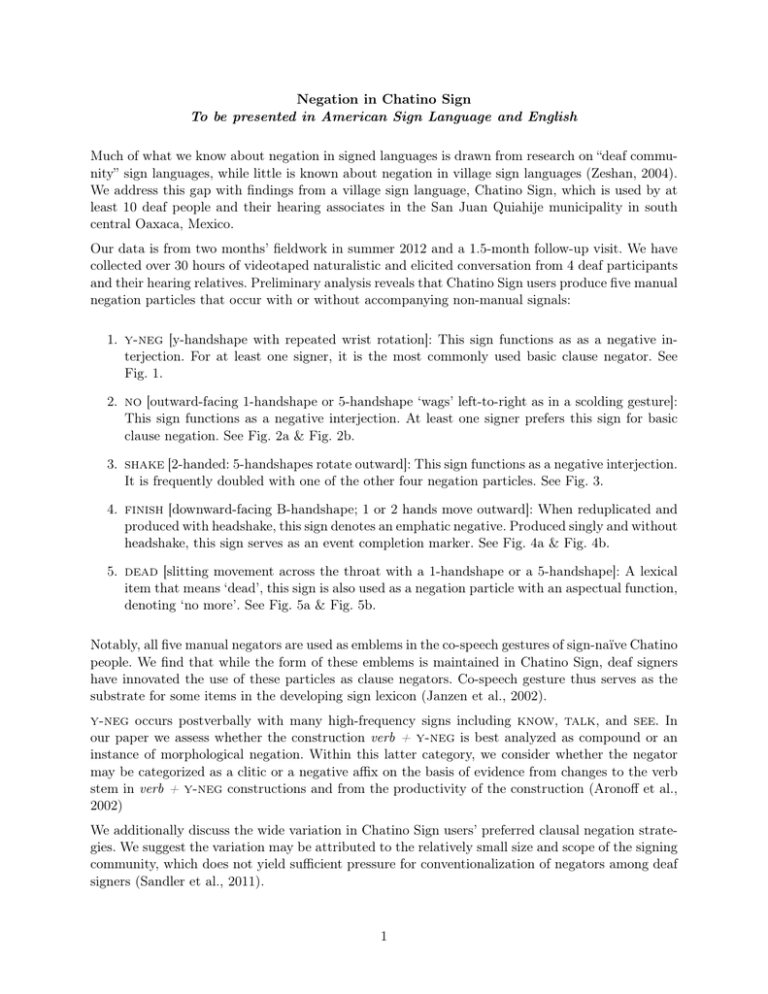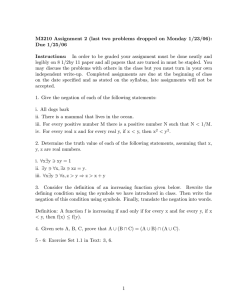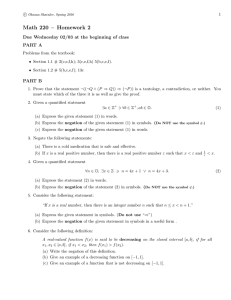Negation in Chatino Sign
advertisement

Negation in Chatino Sign To be presented in American Sign Language and English Much of what we know about negation in signed languages is drawn from research on “deaf community” sign languages, while little is known about negation in village sign languages (Zeshan, 2004). We address this gap with findings from a village sign language, Chatino Sign, which is used by at least 10 deaf people and their hearing associates in the San Juan Quiahije municipality in south central Oaxaca, Mexico. Our data is from two months’ fieldwork in summer 2012 and a 1.5-month follow-up visit. We have collected over 30 hours of videotaped naturalistic and elicited conversation from 4 deaf participants and their hearing relatives. Preliminary analysis reveals that Chatino Sign users produce five manual negation particles that occur with or without accompanying non-manual signals: 1. y-neg [y-handshape with repeated wrist rotation]: This sign functions as as a negative interjection. For at least one signer, it is the most commonly used basic clause negator. See Fig. 1. 2. no [outward-facing 1-handshape or 5-handshape ‘wags’ left-to-right as in a scolding gesture]: This sign functions as a negative interjection. At least one signer prefers this sign for basic clause negation. See Fig. 2a & Fig. 2b. 3. shake [2-handed: 5-handshapes rotate outward]: This sign functions as a negative interjection. It is frequently doubled with one of the other four negation particles. See Fig. 3. 4. finish [downward-facing B-handshape; 1 or 2 hands move outward]: When reduplicated and produced with headshake, this sign denotes an emphatic negative. Produced singly and without headshake, this sign serves as an event completion marker. See Fig. 4a & Fig. 4b. 5. dead [slitting movement across the throat with a 1-handshape or a 5-handshape]: A lexical item that means ‘dead’, this sign is also used as a negation particle with an aspectual function, denoting ‘no more’. See Fig. 5a & Fig. 5b. Notably, all five manual negators are used as emblems in the co-speech gestures of sign-naïve Chatino people. We find that while the form of these emblems is maintained in Chatino Sign, deaf signers have innovated the use of these particles as clause negators. Co-speech gesture thus serves as the substrate for some items in the developing sign lexicon (Janzen et al., 2002). y-neg occurs postverbally with many high-frequency signs including know, talk, and see. In our paper we assess whether the construction verb + y-neg is best analyzed as compound or an instance of morphological negation. Within this latter category, we consider whether the negator may be categorized as a clitic or a negative affix on the basis of evidence from changes to the verb stem in verb + y-neg constructions and from the productivity of the construction (Aronoff et al., 2002) We additionally discuss the wide variation in Chatino Sign users’ preferred clausal negation strategies. We suggest the variation may be attributed to the relatively small size and scope of the signing community, which does not yield sufficient pressure for conventionalization of negators among deaf signers (Sandler et al., 2011). 1 Figure 1: y-neg (a) no 1 (b) no 2 Figure 3: shake Figure 2: Two variants of no (a) finish1 (b) finish2 (a) dead 1 Figure 4: Two variants of finish (b) dead 2 Figure 5: Two variants of dead References Aronoff, M., Meir, I., & Sandler, W. (2005). The paradox of sign language morphology. Language, 81(2), 301. Janzen, T., & Shaffer, B. (2002). Gesture as the substrate in the process of ASL grammaticization. In Meier, R., Cormier, K., & Quinto-Pozos, D., Eds: Modality and structure in signed and spoken languages, 199-223. Cambridge University Press. Sandler, W., Aronoff, M., Meir, I., & Padden, C. (2011). The gradual emergence of phonological form in a new language. Natural language & linguistic theory, 29(2), 503-543. Zeshan, U. (2004). Head, hand, and face: Negative constructions in sign languages Linguistic Typology, 8, 1–58. 2









